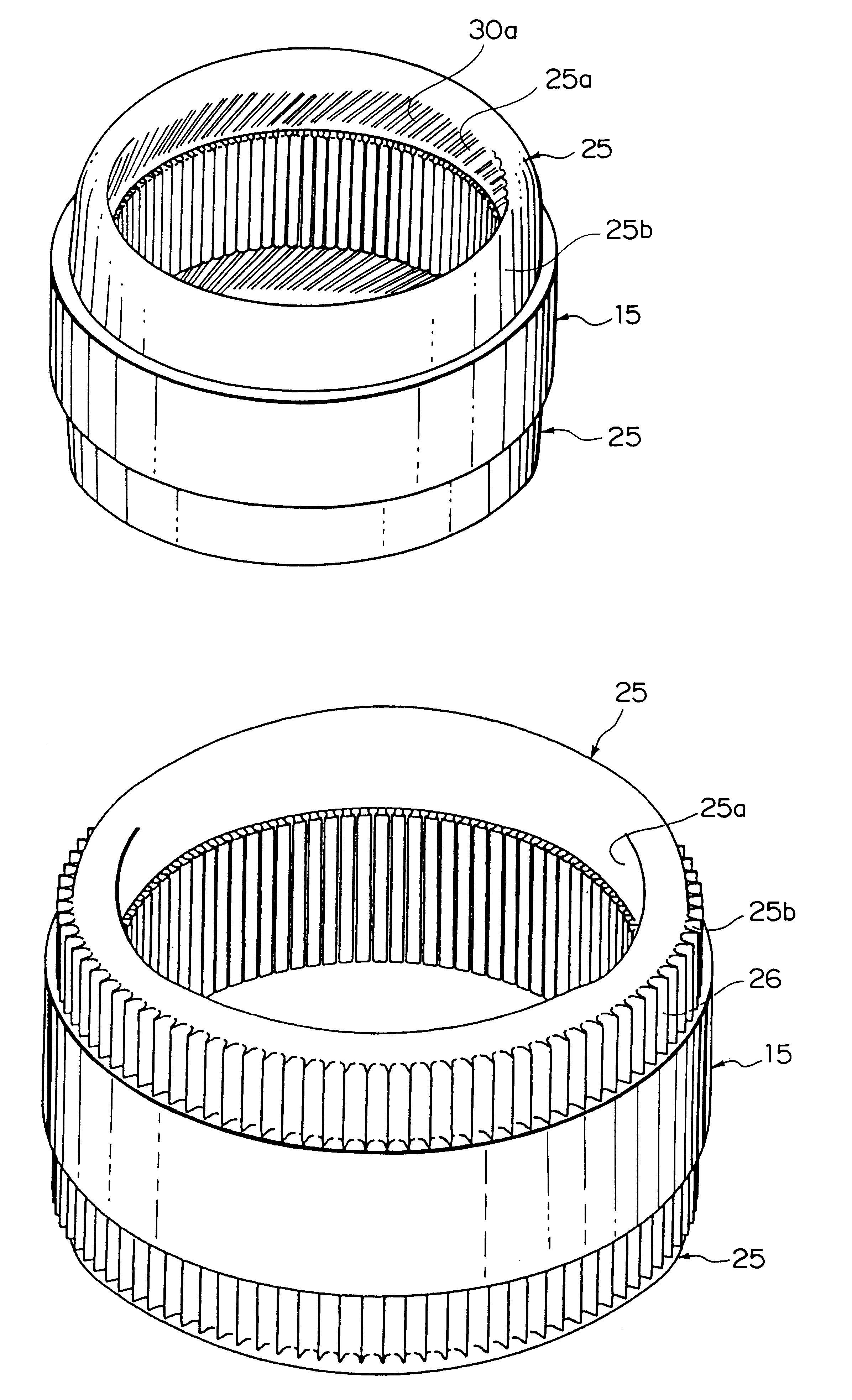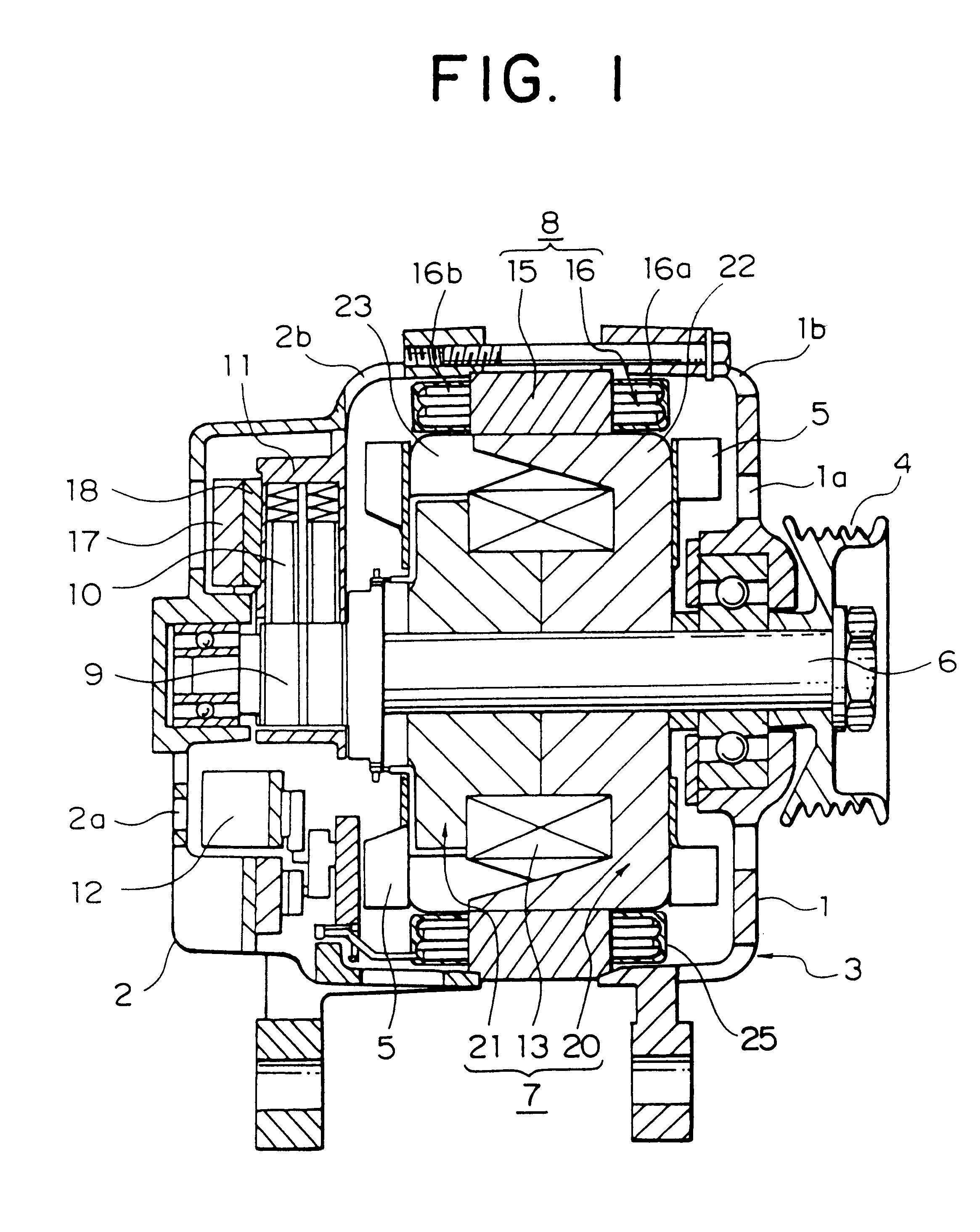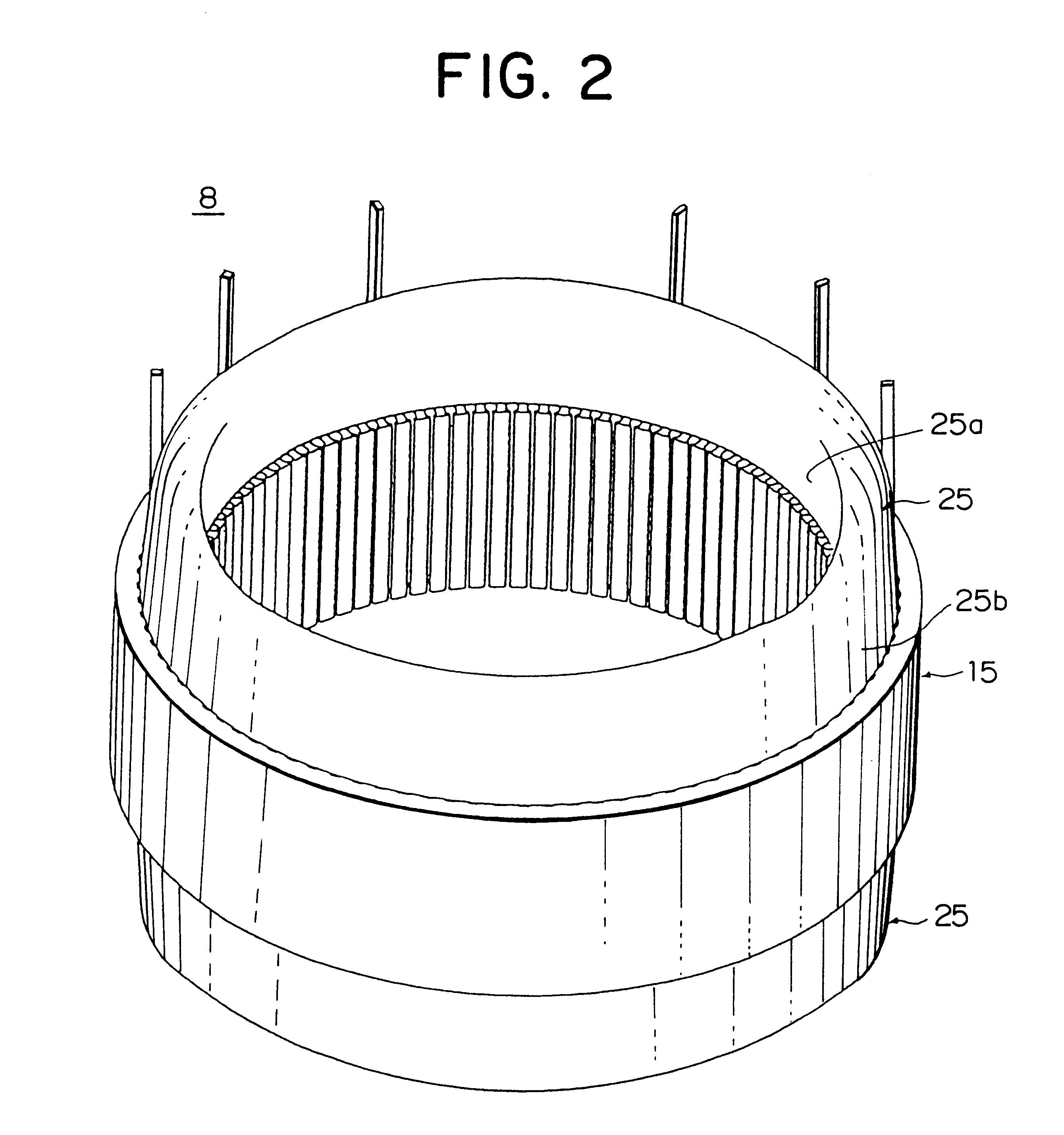Alternator
a technology of alternators and windings, which is applied in the field of alternators, can solve the problems of inability to suppress the temperature increase the cooling of stator winding 52 to deteriorate, and the inability to achieve high outpu
- Summary
- Abstract
- Description
- Claims
- Application Information
AI Technical Summary
Problems solved by technology
Method used
Image
Examples
embodiment 1
FIG. 1 is a cross section showing a construction of an automotive alternator of the present invention, FIG. 2 is a perspective showing a stator of this automotive alternator, FIG. 3 is an end elevation explaining connections in one stator winding phase group in this automotive alternator, FIG. 4 is a perspective explaining a stator winding mounted into the stator of this automotive alternator, FIG. 5 is a circuit diagram for this automotive alternator, FIGS. 6 and 7 are diagrams explaining the manufacturing process for wire-strand groups constituting part of the stator winding used in this automotive alternator, FIGS. 8A and 8B are an end elevation and a plan, respectively, showing an inner-layer wire-strand group constituting part of the stator winding used in this automotive alternator, FIGS. 9A and 9B are an end elevation and a plan, respectively, showing an outer-layer wire-strand group constituting part of the stator winding used in this automotive alternator, FIG. 10 is a per...
embodiment 2
In Embodiment 2, as shown in FIG. 15, the bracket-facing surfaces 25b of the electrically-insulative resin portions 25 are disposed in close contact with inner wall surfaces of the front and rear brackets 1 and 2 of the rotor 8. Moreover, the rest of the construction is the same as in Embodiment 1 above.
According to Embodiment 2, because the bracket-facing surfaces 25b of the electrically-insulative resin portions 25 are disposed in close contact with inner wall surfaces of the front and rear brackets 1 and 2, heat generated in the coil ends 16a and 16b is efficiently transferred to the low-temperature brackets 1 and 2 through the electrically-insulative resin portions 25, improving the cooling of the stator winding 16 and enabling reductions in the size of the alternator proportionate to the reductions in gaps between the electrically-insulative resin portions 25 and the inner wall surfaces of the brackets 1 and 2.
embodiment 3
In Embodiment 3, as shown in FIG. 16, some outer surfaces (surfaces facing the rotor 7) of the turn portions 30a of the strands of wire 30 constituting the inner layer are positioned in the same plane as the rotor-facing surfaces 25a of the electrically-insulative resin portions 25 so as to be exposed. Moreover, the rest of the construction is the same as in Embodiment 1 above.
In Embodiment 3, because the cooling air contacts the exposed surfaces of the turn portions 30a of the strands of wire 30, heat generated in the coil ends 16a and 16b is efficiently radiated from the exposed surfaces of the turn portions 30a, improving the cooling of the stator winding 16.
Here, if the strands of wire 30 are formed with a rectangular cross section, it is easy to define the plane in which the strands of wire are exposed on the rotor-facing surfaces 25a of the electrically-insulative resin portions 25, but even if the strands of wire have a circular cross section, the same effect can be achieved ...
PUM
 Login to View More
Login to View More Abstract
Description
Claims
Application Information
 Login to View More
Login to View More - R&D
- Intellectual Property
- Life Sciences
- Materials
- Tech Scout
- Unparalleled Data Quality
- Higher Quality Content
- 60% Fewer Hallucinations
Browse by: Latest US Patents, China's latest patents, Technical Efficacy Thesaurus, Application Domain, Technology Topic, Popular Technical Reports.
© 2025 PatSnap. All rights reserved.Legal|Privacy policy|Modern Slavery Act Transparency Statement|Sitemap|About US| Contact US: help@patsnap.com



